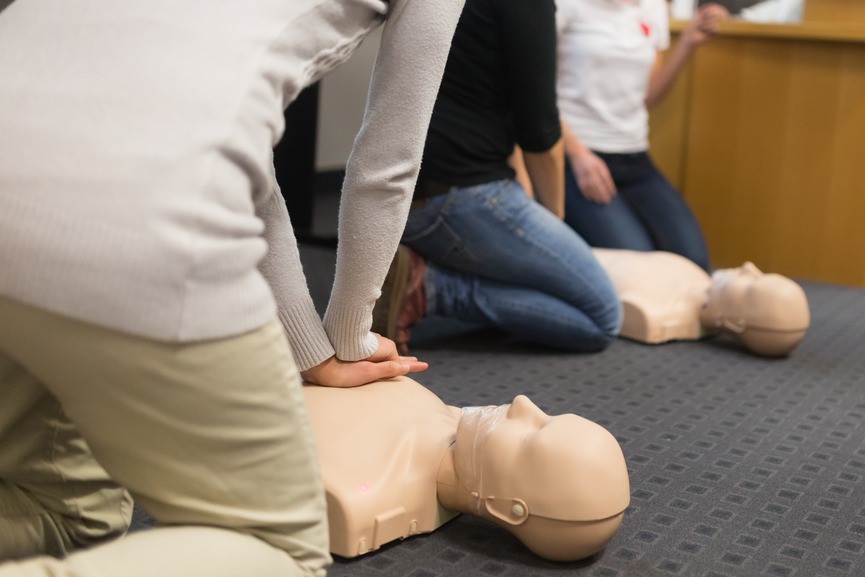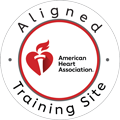Each year, sudden cardiac arrest claims hundreds of thousands of lives worldwide, often without warning. However, the chances of survival can more than double if a bystander performs CPR and uses an Automated External Defibrillator (AED) within the first few critical minutes. This life-saving intervention is a crucial link in what experts call the “Chain of Survival,” a series of actions that maximize the chances of survival during a cardiac emergency.
In this article, we’ll explore the power of bystander intervention through CPR and AED use, the ease of learning these skills, and how community training in CPR and AED use can make a life-saving difference in public health.
Understanding the Golden Minutes
Why Every Minute Counts in Cardiac Arrest
When someone suffers a cardiac arrest, their heart suddenly stops pumping blood effectively, depriving the brain and other organs of oxygen. The brain begins to suffer irreversible damage within just a few minutes without oxygen. Each minute without CPR or defibrillation reduces the victim’s chance of survival by 7-10%. This is why the first few minutes—often called the “golden minutes”—are so vital.
Survival Statistics with Early vs. Delayed Intervention
Statistics consistently show a stark difference in outcomes when CPR is administered within the first few minutes of cardiac arrest versus waiting for professional medical help to arrive. The American Heart Association (AHA) notes that early CPR can double or triple survival rates. Without bystander CPR, the chances of survival plummet, emphasizing the importance of immediate action by those nearby.
The 3-5 Minute Window for Optimal Outcomes
Call Us Now
Get the Best CPR Class in Indianapolis Today!
Research suggests that the ideal window for bystander CPR and defibrillation falls within the first 3 to 5 minutes of collapse. An AED can restore a normal heart rhythm by delivering an electric shock, but it is only effective if applied within this window. Communities with a high rate of trained bystanders and accessible AEDs have consistently higher survival rates for cardiac arrest victims.

Bystander CPR: Breaking Down Barriers
Common Hesitations and Fears
Despite CPR’s proven effectiveness, many people hesitate to provide it in an emergency. Fear of causing harm, uncertainty about technique, and a lack of confidence are common concerns. However, the risks of inaction far outweigh the potential for minor harm, and even minimal assistance can improve a victim’s chances of survival.
Hands-Only CPR vs. Traditional CPR
Modern CPR methods have evolved to make intervention easier. Hands-only CPR, which involves continuous chest compressions without mouth-to-mouth breathing, is a simpler and highly effective option. This approach is especially valuable for bystanders without formal training or those uncomfortable with traditional CPR. Studies have shown that hands-only CPR can be as effective as conventional CPR in the first few minutes following a cardiac arrest.
Legal Protections for Good Samaritans
To encourage intervention, most states have Good Samaritan laws that protect bystanders who assist in emergencies. These laws ensure that individuals acting in good faith are not held liable for unintentional injuries or outcomes. Understanding these legal protections can empower more bystanders to step in confidently and provide CPR or use an AED.
The Simplicity of Modern CPR Techniques
Hands-only CPR requires only two steps: calling emergency services and pushing hard and fast on the chest at a rate of about 100-120 compressions per minute, ideally to the beat of a familiar song like “Stayin’ Alive.” With AEDs available in many public places, bystanders can also follow simple, clear instructions from these devices to deliver a potentially life-saving shock.
AEDs: The Game-Changer
How AEDs Work
AEDs are devices designed to detect and correct an irregular heart rhythm during cardiac arrest. By reading the heart’s electrical activity, an AED determines if a shock is needed and guides the user through the process. AEDs are designed for ease of use, with voice prompts and visual cues to ensure even untrained bystanders can operate them effectively.
Modern AED User-Friendliness
Modern AEDs are user-friendly, often providing clear audio instructions in simple language, visual diagrams, and automatic prompts to ensure correct pad placement and shock delivery. This simplicity makes AEDs accessible to nearly anyone, even those with no prior training.
Public Access AED Locations
AEDs are becoming more common in public areas, including airports, shopping malls, schools, and gyms. This widespread placement ensures that they are accessible in high-traffic locations where cardiac emergencies are likely to occur. The success of public access AED programs worldwide has prompted many communities to increase AED placement, further improving the odds of bystander intervention.
Success Stories and Statistics
Cities with robust public AED programs report improved survival rates for out-of-hospital cardiac arrest. In Seattle, for example, bystander intervention, paired with accessible AEDs, has led to survival rates as high as 62% for some forms of cardiac arrest. Each year, thousands of lives are saved by the presence of an AED and a willing bystander.
Real-World Impact
Local Survival Stories
Across communities, real-life survival stories showcase the power of quick-thinking bystanders. Many cardiac arrest survivors owe their lives to someone who stepped in to perform CPR or use an AED. These inspiring stories highlight the impact that one person’s actions can have.
Statistics on Bystander Intervention Outcomes
Statistics consistently demonstrate that bystander intervention in cardiac emergencies saves lives. According to the Sudden Cardiac Arrest Foundation, victims who receive bystander CPR have double the chance of survival compared to those who do not. The success of these interventions underscores the importance of public awareness and readiness to act.
Community Impact of Trained Responders
Communities with a high rate of CPR-certified citizens see tangible health benefits, including higher cardiac arrest survival rates. These communities also foster a culture of readiness, where citizens are prepared to support each other in emergencies. Many schools, workplaces, and community organizations now offer CPR training to employees, students, and members, creating a more resilient and prepared population.
Getting Trained: A Community Responsibility
Available Certification Options
There are multiple CPR and AED certification options to fit different needs. The American Heart Association and American Red Cross offer courses like Basic Life Support (BLS) for Healthcare Providers, Advanced Cardiac Life Support (ACLS), Pediatric Advanced Life Support (PALS), and basic CPR and First Aid for the general public. These courses vary in depth, duration, and focus, from fundamental CPR to advanced life-saving techniques for healthcare settings.
BLS for Healthcare Providers
BLS training is critical for healthcare providers who may face cardiac emergencies regularly. This training emphasizes a systematic approach to CPR and AED use, teaching skills like airway management, high-quality chest compressions, and team-based resuscitation strategies.
ACLS and PALS
ACLS and PALS are advanced certifications for medical professionals and responders who may handle cardiac events involving adults and children. ACLS focuses on adult emergencies, including the use of medications and advanced airway techniques, while PALS targets pediatric cases, providing critical skills to save infants and young children.
Basic CPR and First Aid
For those who may not need advanced training, basic CPR and first aid are widely accessible and can make a significant difference in emergencies. Many community centers, schools, and even online programs offer this certification, focusing on essential skills for the general public.
Training Process and Time Commitment
Most CPR courses take between 4-9 hours and involve both hands-on practice and theoretical knowledge. Many programs offer flexible schedules to accommodate busy participants, making it easier for everyone to gain life-saving skills.
Certification Renewal Importance
CPR and AED guidelines are periodically updated to reflect the latest research. Regular certification renewal ensures that participants are familiar with current best practices, enhancing their effectiveness during emergencies.
Taking Action
How to Locate CPR Classes in Indianapolis
Indianapolis offers numerous options for CPR and AED certification. Local hospitals, the AHA, and certified training centers often list available courses online. Additionally, many training organizations provide corporate or group classes to educate entire workplaces or community groups.
Benefits of Choosing an AHA Training Site
AHA-certified sites adhere to high standards, providing reputable and up-to-date CPR and AED training. Choosing an AHA-affiliated course ensures that learners receive thorough, reliable instruction in life-saving techniques.
Investment in Life-Saving Skills
Obtaining CPR certification is an investment in one’s ability to save lives. Training costs are relatively modest, especially considering the lifelong value of these skills. Becoming CPR-certified also provides peace of mind, empowering individuals to act confidently in emergencies.
Next Steps for Getting Certified
To begin, find an AHA or Red Cross CPR class in your area, either through their websites or by calling local training centers. Many courses are available online and in-person, making it easy to find a program that fits your schedule and budget.
Conclusion
Call to Action: Sign Up for Training
Becoming CPR-certified equips you with the power to save lives. Sign up for a local CPR and AED course today to learn how you can make a life-saving difference. Remember, the life you save could be a loved one or a stranger, but the impact of your actions can last a lifetime.
Reminder of Community Impact
By joining others in your community who are prepared to respond, you help create a safer, healthier environment for everyone. Trained bystanders can mean the difference between life and death, and your commitment to learning CPR and AED skills contributes to the resilience of your entire community.
For those in the Indianapolis area, CPR Indianapolis offers training for individuals, groups, and workplaces, ensuring that the skills needed for emergency response are within reach.


